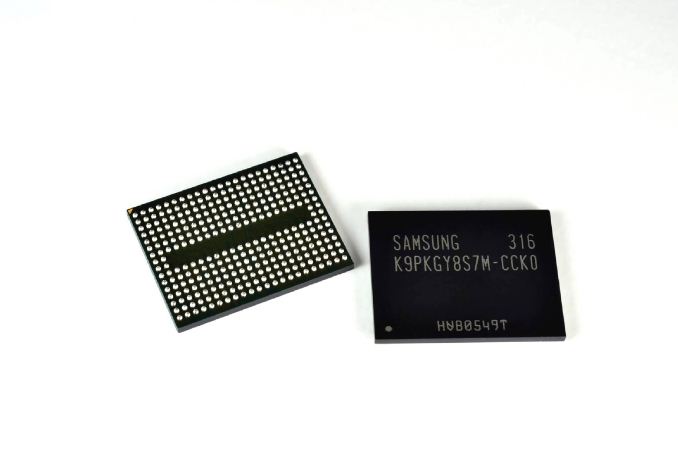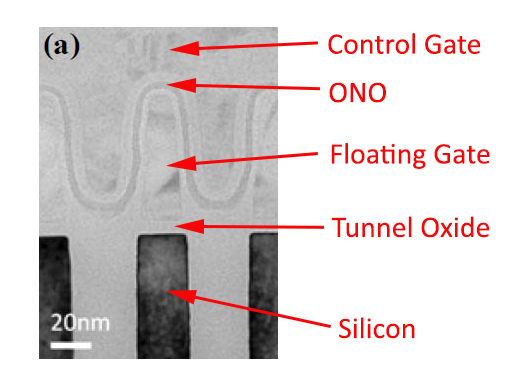The Truth About SSD Data Retention
by Kristian Vättö on May 13, 2015 3:42 PM EST
In the past week, quite a few media outlets have posted articles claiming that SSDs will lose data in a matter of days if left unpowered. While there is some (read: very, very little) truth to that, it has created a lot of chatter and confusion in forums and even I have received a few questions about the validity of the claims, so rather than responding to individual emails/tweets from people who want to know more, I thought I would explain the matter in depth to everyone at once.
First of all, the presentation everyone is talking about can be found here. Unlike some sites reported, it's not a presentation from Seagate -- it's an official JEDEC presentation from Alvin Cox, the Chairman of JC-64.8 subcommittee (i.e. SSD committee) at the time, meaning that it's supposed to act as an objective source of information for all SSD vendors. It is, however, correct that Mr. Cox works as a Senior Staff Engineer at Seagate, but that is irrelevant because the whole purpose of JEDEC is to bring manufacturers together to develop open standards. The committee members and chairmen are all working for some company and currently the JC-64.8 subcommittee is lead by Frank Chu from HGST.
Before we go into the actual data retention topic, let's outline the situation by focusing on the conditions that must be met when the manufacturer is determining the endurance rating for an SSD. First off, the drive must maintain its capacity, meaning that it cannot retire so many blocks that the user capacity would decrease. Secondly, the drive must meet the required UBER (number of data errors per number of bits read) spec as well as be within the functional failure requirement. Finally, the drive must retain data without power for a set amount of time to meet the JEDEC spec. Note that all these must be conditions must be met when the maximum number of data has been written i.e. if a drive is rated at 100TB, it must meet these specs after 100TB of writes.
The table above summarizes the requirements for both client and enterprise SSDs. As we can see, the data retention requirement for a client SSD is one-year at 30°C, which is above typical room temperature. The retention does depend on the temperature, so let's take a closer look of how the retention scales with temperature.
EDIT: Note that the data in the table above is based on material sent by Intel, not Seagate.
At 40°C active and 30°C power off temperature, a client SSD is set to retain data for 52 weeks i.e. one year. As the table shows, the data retention is proportional to active temperature and inversely proportional to power off temperature, meaning that a higher power off temperature will result in decreased retention. In a worst case scenario where the active temperature is only 25-30°C and power off is 55°C, the data retention can be as short as one week, which is what many sites have touted with their "data loss in matter of days" claims. Yes, it can technically happen, but not in typical client environment.
In reality power off temperature of 55°C is not realistic at all for a client user because the drive will most likely be stored somewhere in the house (closet, basement, garage etc.) in room temperature, which tends to be below 30°C. Active temperature, on the other hand, is usually at least 40°C because the drive and other components in the system generate heat that puts the temperature over room temperature.
As always, there is a technical explanation to the data retention scaling. The conductivity of a semiconductor scales with temperature, which is bad news for NAND because when it's unpowered the electrons are not supposed to move as that would change the charge of the cell. In other words, as the temperature increases, the electrons escape the floating gate faster that ultimately changes the voltage state of the cell and renders data unreadable (i.e. the drive no longer retains data).
For active use the temperature has the opposite effect. Because higher temperature makes the silicon more conductive, the flow of current is higher during program/erase operation and causes less stress on the tunnel oxide, improving the endurance of the cell because endurance is practically limited by tunnel oxide's ability to hold the electrons inside the floating gate.
All in all, there is absolutely zero reason to worry about SSD data retention in typical client environment. Remember that the figures presented here are for a drive that has already passed its endurance rating, so for new drives the data retention is considerably higher, typically over ten years for MLC NAND based SSDs. If you buy a drive today and stash it away, the drive itself will become totally obsolete quicker than it will lose its data. Besides, given the cost of SSDs, it's not cost efficient to use them for cold storage anyway, so if you're looking to archive data I would recommend going with hard drives for cost reasons alone.














86 Comments
View All Comments
pseudoid - Tuesday, May 26, 2015 - link
eh? I thought the resistance reduced as the temperature got lower.. to the point where you get near absolute zero [Look Ma, I am on Helium!] and poof [or qwaaaak!] resistance is down to nada, nothing, nunca, niente, zero, zip, zilch!ALBundyHere - Thursday, May 14, 2015 - link
i'm very confused by the wording in this article. "the figures presented here are for a drive that has already passed its endurance rating" does that mean that the drive is out of its warranty period, ran out of the last unallocated sector flash blocks, or the NAND's write tolerance had been exceeded, or something else? If the NAND's write tolerance had been exceeded, then this article makes no sense. the drive, as proven by the Tech Report through their SSD endurance experiment, would simply just stop working at once, so no data would even be readable, and in some cases, the drive would brick itself when the power is cycled, thus not even showing up in the system POST.sheh - Thursday, May 14, 2015 - link
I read it as: past the manufacturer specced TBW.Kristian Vättö - Thursday, May 14, 2015 - link
That is correct, it's the TBW that counts.HMK - Thursday, May 14, 2015 - link
What I find the most interesting is that data retention in some cases is effectively halved, by a simple temperature change of just 5 celsius and this occurs in any shown temperature area on the chart.HighTech4US - Thursday, May 14, 2015 - link
Bitrot and complete data loss on SSD's has been known to be an issue for a long time and the newer SSD's are making the problem worse because of the thinning layers.If possible keep the SSD powered on at all times so the SSD firmware can do background operations to keep the data valid. So on Windows disable the "power off hard drives option" in the power profile and let the computer Sleep instead of Hibernate.
If you have a laptop with a SSD and it is mostly powered off then at least once a month power it on and do a full backup to both refresh the SSD cells and have a backup in case the SSD bites the big one.
HighTech4US - Friday, May 15, 2015 - link
A to Z of SSD: Data Retentionhttp://www.virtium.com/blog/z-ssd-data-retention
emvonline - Thursday, May 14, 2015 - link
Good analysis Kristian. The current spin from this old presentation is almost mind boggling in its ignorance. classic example of "a little knowledge is a dangerous thing".NAND physics does state that retention will have a lifetime
couple items:
1) this is a spec, that set a limit on how to measure BER. it doesnt not mean that the devices will fail anywhere near here.... they dont. Before this spec, the limit was zero for endurance... max the write out and all bets are off.
2) as mentioned. it is the retention after maxing out write lifetime. if your SSD is maxed out in write lifetime, this is rare (nearly unheard of for client), it is probably a good idea to back it up ... 100% of enterprise people would do this.
3) the temp coefficient is what is used for models... it does not necessarily apply to real life or all ranges of temperature.
that said, if you are using a SSD that is maxed out for storing data without a backup for 3-4 years without being powered on, you probably should not be managing your own computer (or you like to throw money away).
galta - Thursday, May 21, 2015 - link
I have 256Gb SSD and 2Tb of photos. Because I am not sure of what photos should I keep for fast access, I have written/rewritten 95Tb on the SSD, but still have not made up my mind.Also, because I happen to live in a scientific base in the Artic, working temperature is around 25C but, after work, I go to sleep with my notebook and temperature under the blanket gets close to 35C.
In the case my base is destroyed by some winter storm and my remains are only found in 10 years from now, will my kids be able to retrieve the beautiful pictures I have taken of whales and polar bears?
Does it mean I should go back to HDDs, or better, 3 1/2" floppies? I still have thousands of news boxes of them, both 1.44Mb and 720K!!!
Too bad I did not read this article before.
The comments here made me laugh like I haven't in quite a while.
Bachsau - Sunday, May 31, 2015 - link
Well, temperatures of 40°C and more for several days are not unusual in hot summers and just normal in some of the worlds warmer countries. We should not even accept data rentention times anywhere below five years on < 50°C. A mass storage device must hold its data. That is much more important than speed or anything else!